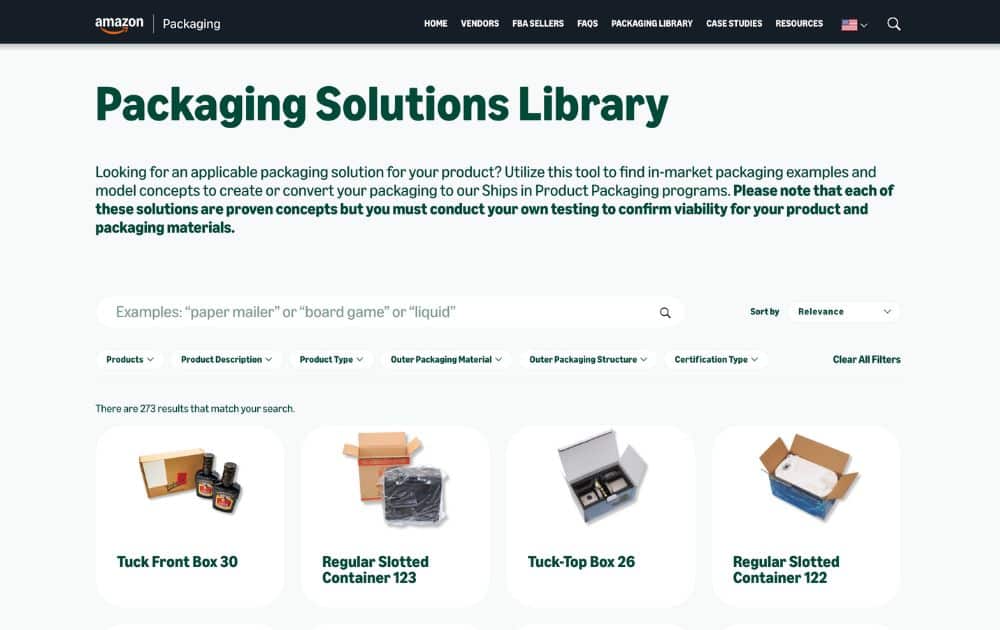How to Make Eco-Friendly Packaging for Your Products
As a consumer, does eco-friendly packaging increase your likelihood of buying from a brand? If your answer is yes, you’re in good company. In fact, 6 out of 10 shoppers answered the same, based on a 2024 survey.
In addition, 74% of consumers said they’re willing to wait a bit longer for their items if it means being kinder to the environment.

So, the golden question: knowing that sustainability is crucial for today’s shoppers, how can you make your business step up to offer packaging that ships smarter and leaves less behind?
What Is Eco-Friendly Packaging?
Eco-friendly packaging involves using materials and designs that aim to lessen harm to the environment, starting from how they’re made to how they’re discarded or reused.
It’s about more than just swapping out plastic for paper. Truly sustainable packaging takes into account the full lifecycle of a product’s protection, including how it’s sourced, produced, recycled, and ultimately disposed of by the end user.
So, how can packaging be more eco-friendly? Start with materials that are:
- Recyclable
- Compostable
- Biodegradable
Eco-friendly packaging isn’t a one-size-fits-all solution. Packaging needs vary; what’s perfect for a cosmetics line could be totally wrong for gadgets or snacks. The key is to think intentionally about your product, your customer, and the environmental footprint you’re leaving behind.
Why Eco-Friendly Packaging Matters
A significant portion of the world’s waste comes from packaging materials. According to OECD data cited by Our World in Data, a staggering 40% of the world’s plastic waste comes from packaging, totaling 142 million tonnes out of 353 million tonnes generated in 2019.

And more than half of that packaging waste comes from the US, Europe, and China. That’s a massive environmental footprint from boxes, wraps, and fillers that often serve a single-use purpose.
This is where eco-friendly packaging becomes more than just a branding statement. When brands commit to sustainable packaging solutions, they help shift the industry away from waste-heavy systems toward a more responsible future.
But aside from benefiting the environment, adopting eco-friendly packaging and embracing a circular economy model offers a few business-focused benefits:
- Stronger Brand Differentiation. It makes it easier to stand out in crowded markets if you showcase sustainable values. After all, eco-friendly packaging signals commitment and innovation.
- Cost Efficiency Over Time. Designing for reuse and recyclability often uncovers material and logistics savings—lighter, simpler packs reduce shipping costs and inventory waste.
- Enhanced Customer Loyalty. Shoppers increasingly reward brands that share their values. 46% to 64% of consumers from various countries surveyed in 2023 agreed that eco-friendly packaging is a crucial factor in sustainable consumption.

Primary, Secondary, and Tertiary Packaging on Amazon
Every product goes through several layers of packaging, each with a unique purpose in protecting, presenting, and moving goods efficiently. Amazon categorizes these packaging types into:
Primary Packaging
This is the layer that touches your product directly: what the customer opens, squeezes, twists, or unwraps. Also known as consumer packaging, it includes your bottles, jars, pouches, and branded boxes. Primary packaging:
- Holds and protects the actual product
- Influences purchase decisions with design and labeling
- Stays with the customer after unboxing
Secondary Packaging
Secondary packaging groups one or more units of your product together. It makes retail display, storage, or bundling easier, especially for items sold as sets. Secondary packaging:
- Adds another layer of protection
- Often includes trays, sleeves, or branded boxes around primary items
- Helps organize bulk or combo orders
Tertiary Packaging
This is the outermost layer, used to transport large quantities of your product safely through the supply chain. It’s what Amazon (or any fulfillment center) uses to get goods from warehouse to door. Tertiary packaging:
- Includes shipping boxes, pallets, and mailers
- Focuses on durability, stability, and stacking efficiency
- Usually discarded after delivery
Eco Friendly Packaging Materials to Consider
Here’s a common question among Amazon sellers (or those aspiring to be): What are some good eco-friendly packaging ideas? There are a variety of options, including the ones below.
Note that not all of these are included in the Amazon Packaging Solutions Library. This online resource helps merchants choose tertiary packaging that meets its sustainability and performance standards, especially for those aiming to qualify for programs like:
- Frustration-Free Packaging (FFP)
- Ships In Own Container (SIOC)
- The Climate Pledge Friendly badge
Recyclable Packaging
Cardboard boxes, kraft mailers, and corrugated inserts remain staples for a reason. These materials are durable, cost-effective, and easy for consumers to recycle curbside. Amazon encourages sellers to avoid mixed materials and choose packaging that’s part of a circular, closed-loop system.
- Using it on Amazon. Many of the packaging designs listed in the Packaging Solutions Library fall into this category. These types of Amazon eco friendly packaging meet structural requirements and support Amazon’s circular economy goals.

Biodegradable Packaging
For lightweight items or sensitive goods, biodegradable mailers made from plant-based polymers or starch blends break down naturally over time. While not always suitable for long-haul shipping, they’re perfect for sellers looking to reduce long-term waste.
- Using it on Amazon. These materials are generally not included in the library for Amazon FBA tertiary packaging. That’s because some biodegradable options don’t hold up well in extreme temperatures or during long-haul transit. However, they are still a great option for FBM orders or custom direct-to-customer (DTC) packaging outside of Amazon. For primary packaging, they could work well in the form of plant-based film wraps, pouches, or starch-based trays.
Compostable Materials
Examples include packaging made from mushrooms, trays crafted from sugarcane bagasse, or wraps using PLA film.
These options are well-suited for brands that value ethical sourcing and minimizing waste. While Amazon doesn’t mandate compostable packaging, choosing it can reflect your commitment to sustainability and may resonate with environmentally conscious customers.
- Using it on Amazon. These can also be used as tertiary packaging for FBM or DTC, but not for FBA. In terms of primary and secondary packaging, they can be used and should be clearly labeled and often certified.
Reusable Packaging
Reusability is gaining traction, especially in luxury and lifestyle categories. Pouches, cloth sleeves, or modular box systems not only reduce waste but enhance the unboxing experience. While these might not work for all Amazon shipments, they’re great for seller-fulfilled orders or special editions.
- Using it on Amazon. It’s also not typical in FBA. For primary and secondary packaging, however, they can come in the form of refillable jars, cloth pouches, or metal tins, as well as custom-branded boxes, modular inserts, or storage-ready trays.
Common Challenges and Best Practices
Here are a few challenges you might encounter and the best practices for eco-friendly packaging:
Navigating Packaging Regulations and Compliance
Eco-friendly or not, your packaging must still comply with Amazon’s strict requirements, especially for FBA. That means meeting standards around safety, labeling, size, and durability.
If you’re selling internationally, you’ll also need to consider local laws around recyclability claims, composting certifications, and packaging waste.
- Best practice. Check Amazon’s FFP and SIOC guidelines if you’re using FBA. When in doubt, consult an expert ecommerce consultant. They can review your packaging setup, guide you toward approved solutions, and help you optimize other aspects of your business.
Finding Reliable Eco-Friendly Packaging Suppliers
Not all packaging suppliers who claim to be “eco-friendly” meet the standards you or Amazon require. Some use greenwashing tactics, while others don’t provide critical specs like thickness, burst strength, or sustainability certifications.
- Best practice. Use verified networks like Amazon’s Packaging Supplier Network or partner with platforms like noissue, EcoEnclose, or PakFactory, which specialize in branded, sustainable materials. Always ask for material samples and certifications (like FSC, BPI, or OK Compost) to ensure your packaging meets real eco standards.
Higher Upfront Costs
Sustainable materials, especially compostable or reusable ones, often cost more than standard plastic or mixed-material packaging. For small businesses or startups, these costs can quickly eat into margins.
- Best practice. Start small. Prioritize switching just one layer of your packaging (e.g., swap plastic mailers for kraft ones). Look for climate pledge friendly suppliers or materials already vetted by Amazon or third-party marketplaces.
Durability and Product Protection
Some eco-friendly packaging materials, like biodegradable film or compostable trays, don’t hold up well during long-haul shipping or extreme weather. This can result in product damage, returns, or negative reviews.
- Best practice. Test packaging under real conditions before launching. For FBA sellers, choose Amazon-approved materials from the Packaging Solutions Library to ensure they pass drop, vibration, and compression tests. Reinforce fragile items with molded pulp, paper-based fillers, or right-sized corrugated inserts.
The Lowdown
Eco-friendly packaging solutions aren’t just about materials. They’re about strategy. Understanding the logistics, cost, regulations, and consumer experience helps you implement changes that stick.
Research, start where you can, and scale thoughtfully. Get it right, and you’re doing good business and doing right by the Earth.
Author
 Carla Bauto Deña is a journalist and content writer producing stories for traditional and digital media. She believes in empowering small businesses with the help of innovative solutions, such as ecommerce, digital marketing, and data analytics.
Carla Bauto Deña is a journalist and content writer producing stories for traditional and digital media. She believes in empowering small businesses with the help of innovative solutions, such as ecommerce, digital marketing, and data analytics.
The post How to Make Eco-Friendly Packaging for Your Products appeared first on AMZ Advisers.


